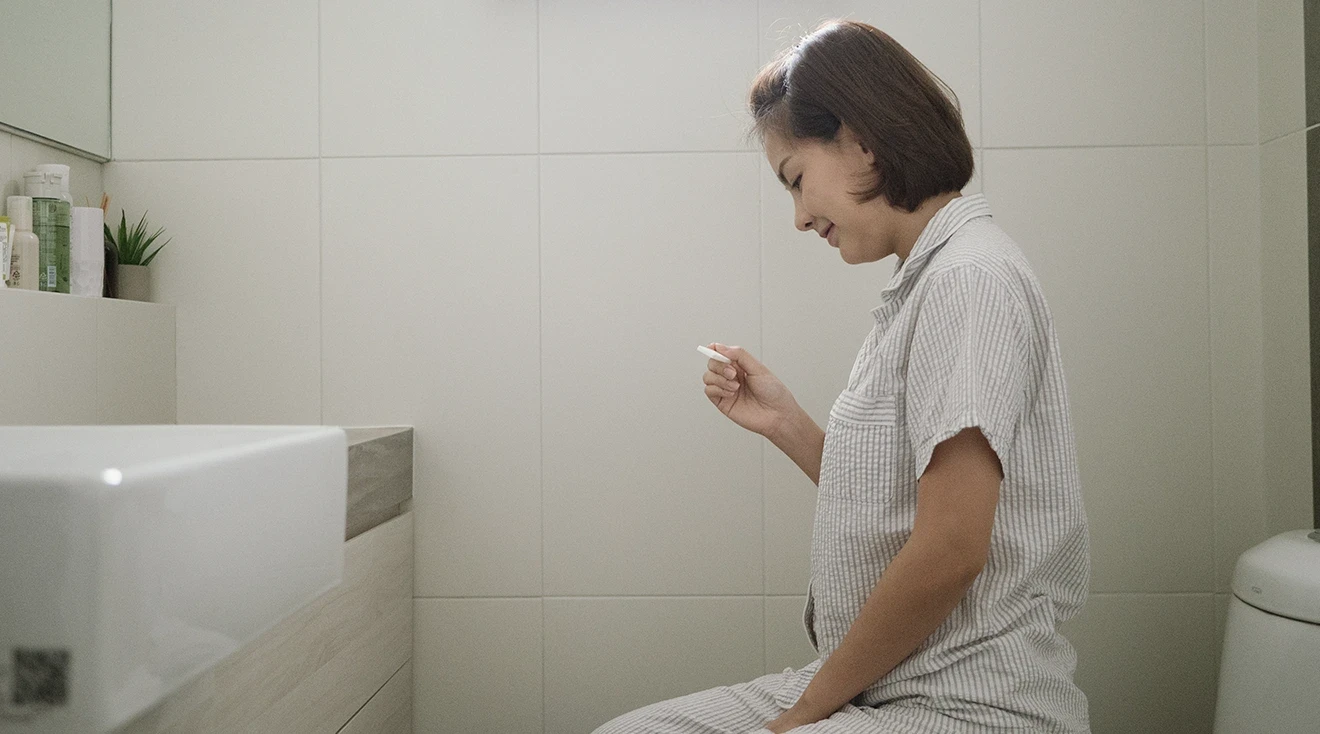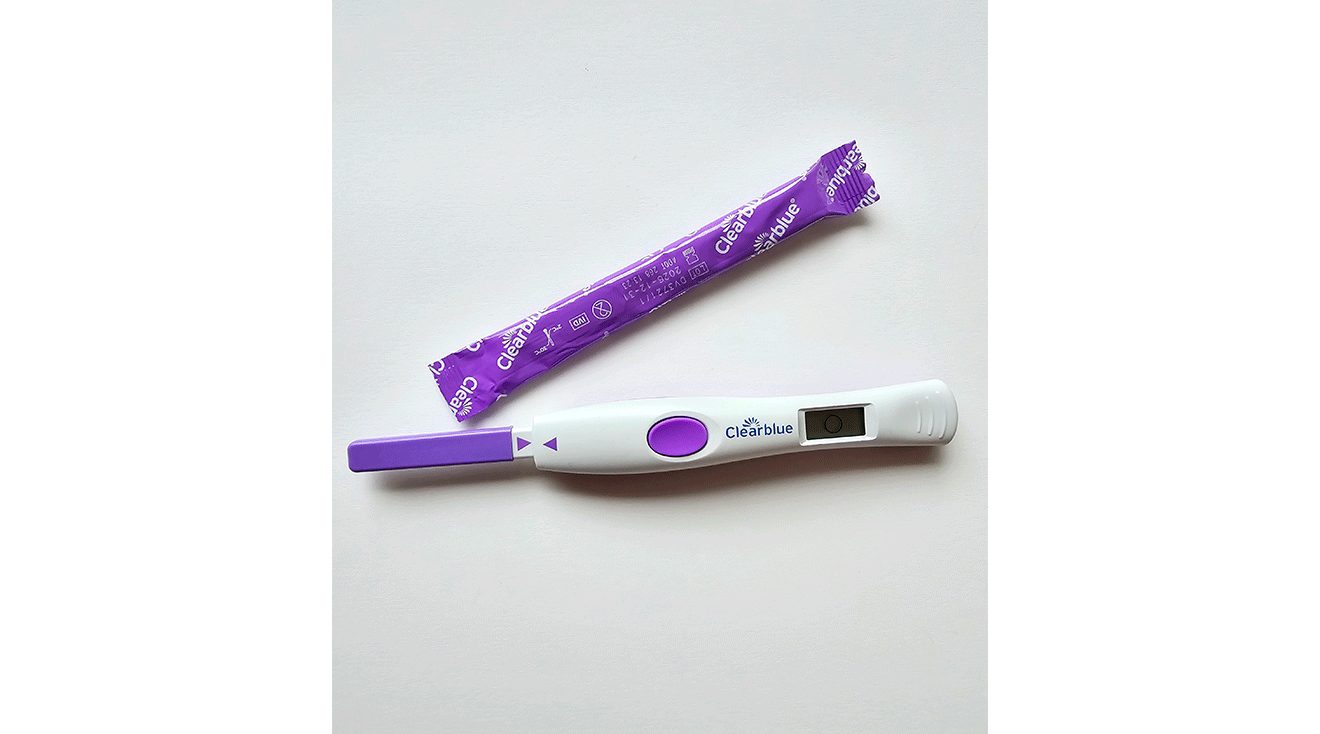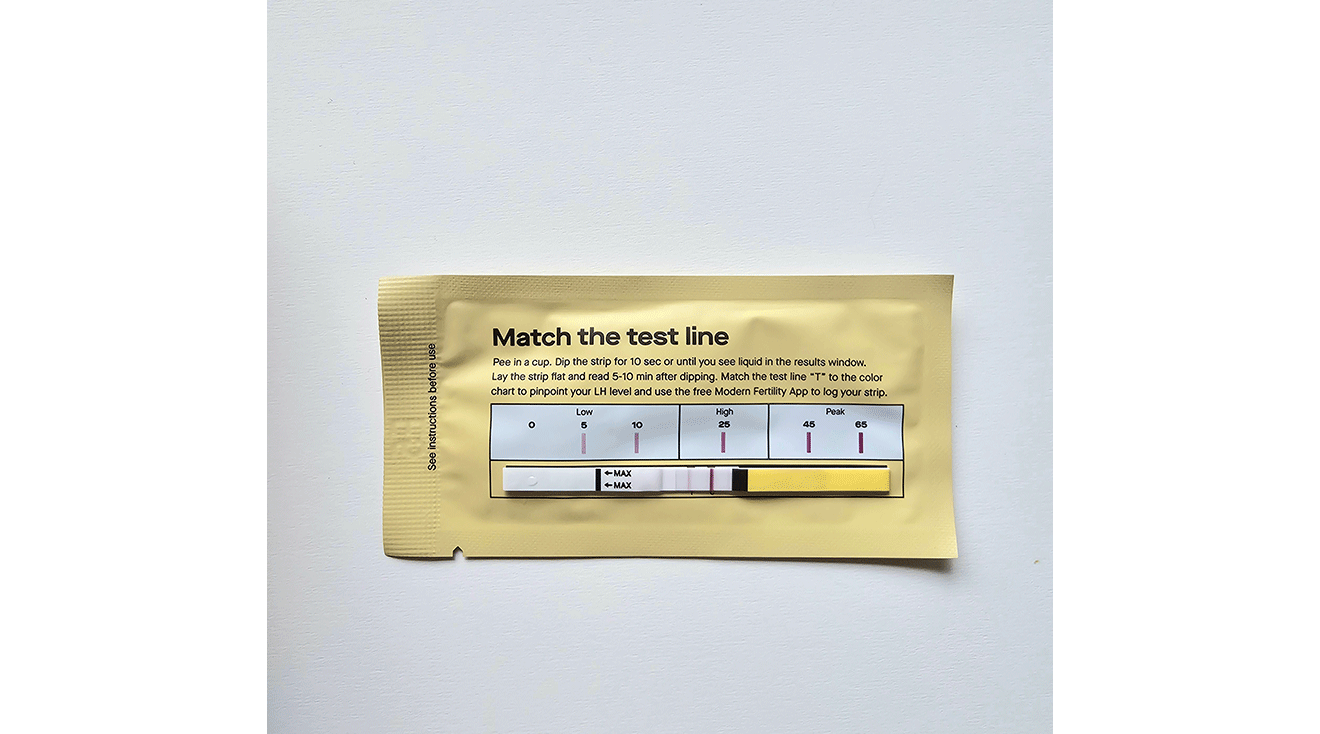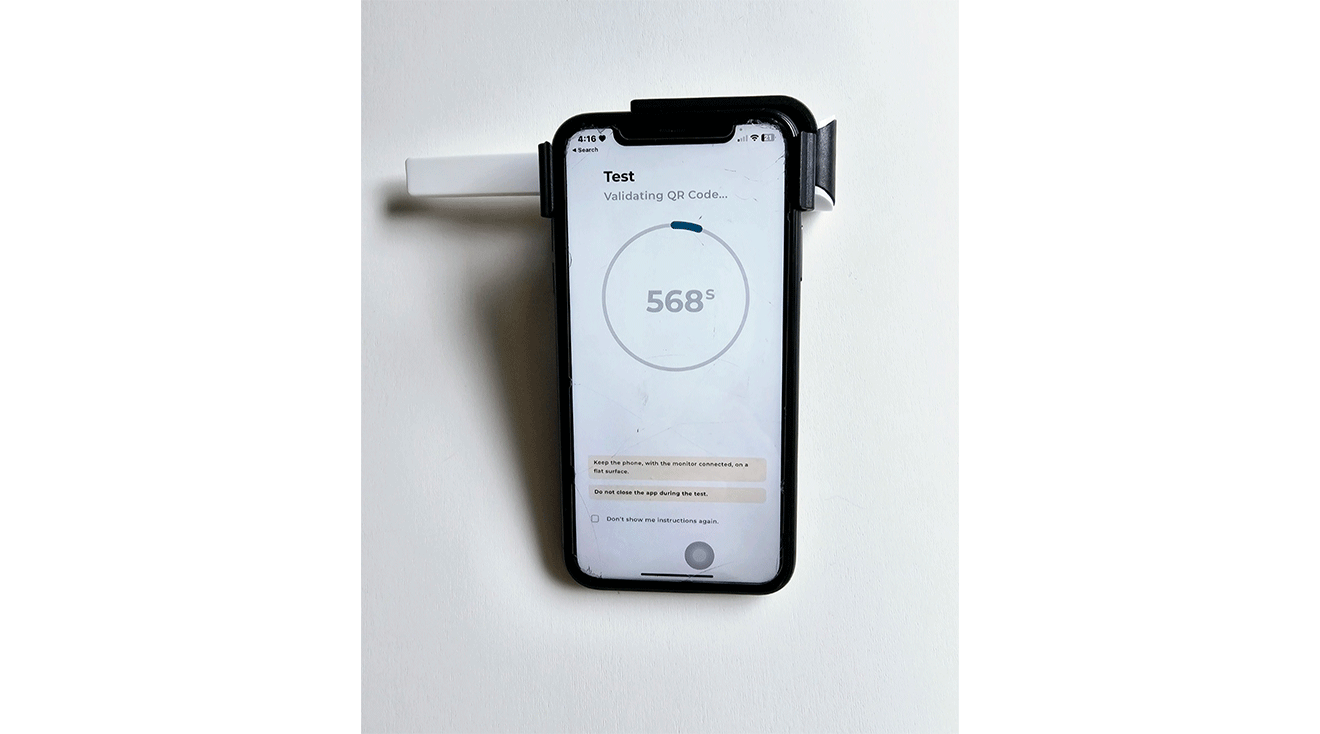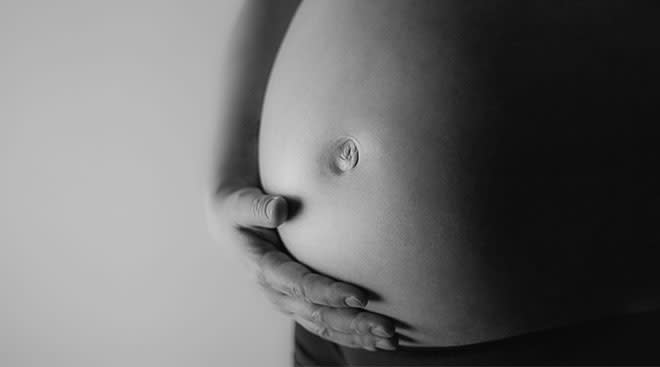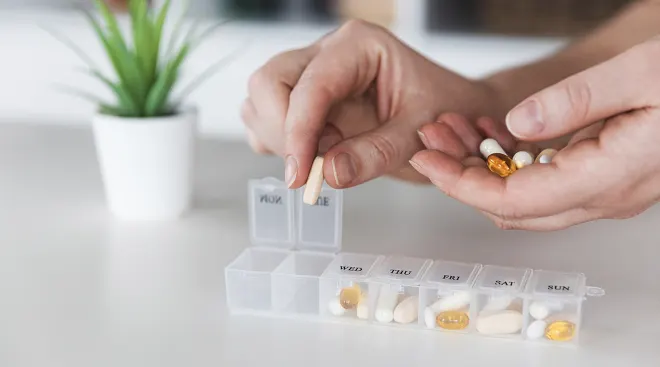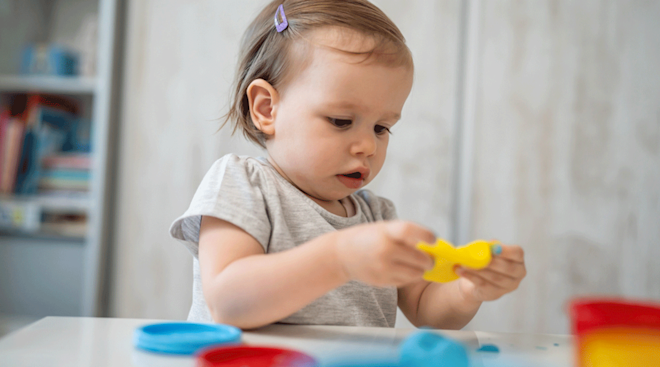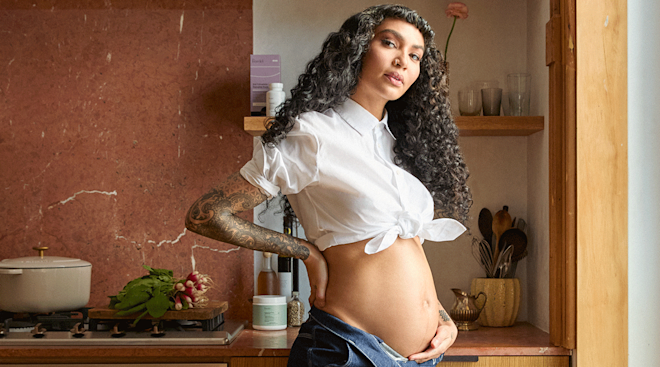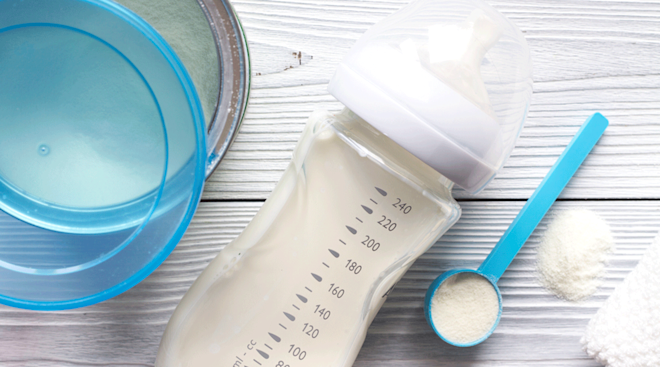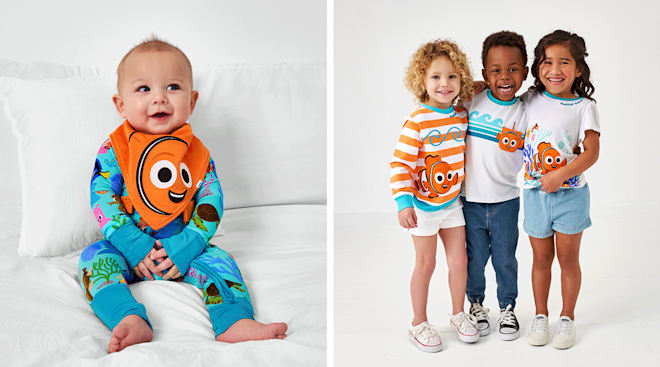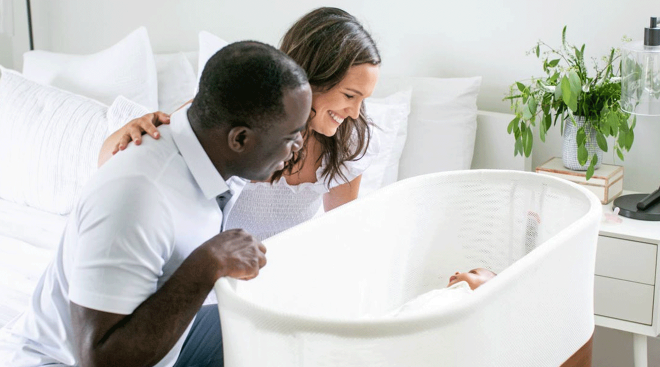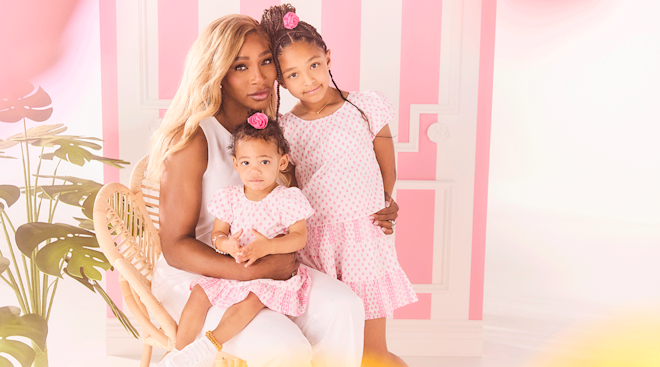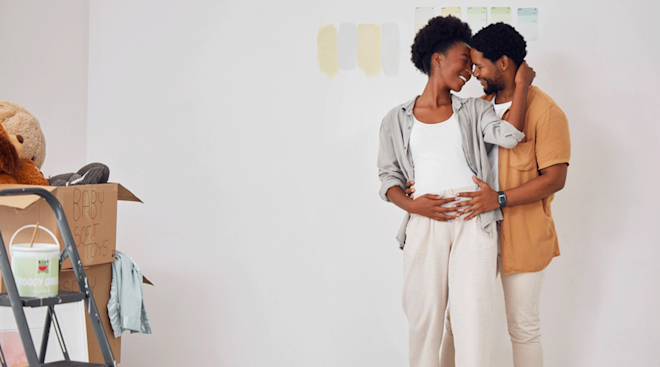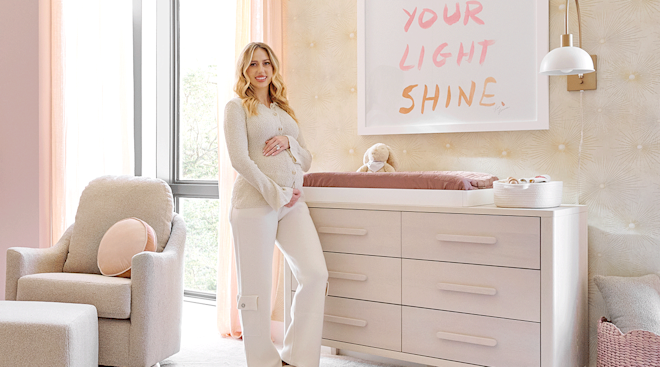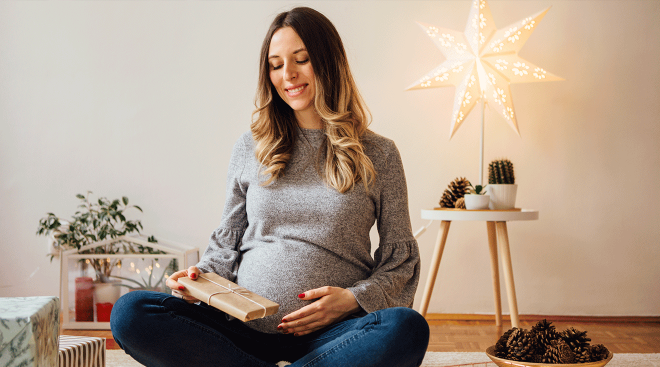5 Best Ovulation Tests to Find Your Fertile Days, Based on Our Testing
In a nutshell:
Based on our hands-on product testing, survey feedback from over 300 members of The Bump community and expert advice from two ob-gyns and a reproductive endocrinologist, we chose the Clearblue Advanced Digital Ovulation Test as the overall best ovulation test, thanks to its accuracy, simplicity and affordability.
When you’re trying to conceive, having a reliable, accurate ovulation test can greatly enhance your chances of success. After all, knowledge is power, and one way to up the ante on your efforts (you know, besides getting busy!) is with a little bit of education and some solid data. That can mean charting your cycle and predicting your most fertile days, or, if counting isn’t your strong suit, you could also try using an ovulation kit.
Of course, there are a ton of ovulation tests available to you, and the differences can be overwhelming. Women with predictable cycles can likely get away with less expensive options, while those with irregular cycles may want to opt for an advanced digital testing system that offers more insight into their fertility. “There are simple test strips that are very similar to urine pregnancy tests, and there are digital tests that can evaluate the results electronically,” explains Shaun Williams, MD, a reproductive endocrinologist at Reproductive Medicine Associates of Connecticut. According to Jenna Turocy, MD, an ob-gyn and reproductive endocrinology and infertility expert at Columbia University Fertility Center, the choice depends on personal preference, convenience and budget. “Basic test strips are more affordable but require interpretation of lines. Digital trackers provide clear results, but typically cost more.”
As a mother of three who used ovulation tests to successfully conceive with my second pregnancy, and as a nurse who’s seen many women use these tests to conceive, I understand the importance of finding the right ovulation test. I tried and tested multiple ovulation predictor kits and narrowed down the list based on options that are not only user-friendly and accurate, but also help you learn more about your body and fertility status. Keep reading for more expert guidance, and to discover the best ovulation test options for pinpointing your peak fertile days.
The Bump editors did extensive research to create a shortlist of 16 top-rated kits, and from there we took the following steps:
-
I personally tested nine ovulation tests and monitors throughout at least one full menstrual cycle. I wore the wearable devices as instructed and peed on all the sticks at the specified times based on data from the last six months of my period tracking app, and evaluated each test for ease of use, clarity of results, quality of the app or monitor device, accuracy, overall experience and value for money.
-
We interviewed two medical experts who specialize in reproductive endocrinology and infertility to get the lowdown on how ovulation tests work and how to read your ovulation test results.
-
We consulted medical sources like the American Pregnancy Association (APA) for information on how to track your ovulation cycle.
-
We surveyed 300 new and expectant parents and asked them to rate the ovulation tests they used while trying to conceive.
Editorial integrity is at the heart of everything we publish. Read about how The Bump develops and reviews all articles, including product reviews.
Overall best ovulation test
- Clear digital results
- Identifies four-day fertility window
- Affordable price point
- Not recommended for women with polycystic ovary syndrome (PCOS)
It's no surprise that the Clearblue Advanced Digital Ovulation Test earned a Best of The Bump award for overall best ovulation test. Not only is it affordable compared to other tests on the market, but it’s also easy to take and to read. While there are tests that provide more extensive results, I think reams of numerical data can be overwhelming for those who are just starting out, or frustrating to those who just need some insight into their most fertile days. The test provides a wider fertile window than your average test (up to four days, compared to two) since it tracks two hormones instead of one, but without a complicated learning curve.
And while I loved this test, you don’t have to just take my word—we also received a ton of positive feedback from our community members who have used this test successfully. “I used this ovulation test for two of my pregnancies, and both times I became pregnant after just one cycle!” says Ashlee Neuman, content director for The Bump and mom of two. “I loved how straightforward it was to use, and how accurate it proved to be. For those looking for a basic, reliable test that’s super user-friendly, this is a standout choice.” (See all of this year’s Best of The Bump winners.)
How it works
This urine test looks at two hormones: luteinizing hormone (LH), which surges just before ovulation, and estrone-3-glucuronide (E3G), which surges shortly before LH. By tracking both hormones, the Clearblue Advanced Digital Ovulation Test pinpoints up to four fertile days, compared to a two-day window on similar tests. A flashing smiley face appears during high fertility, followed by a static smiley face when peak fertility is detected. An empty circle indicates low fertility, in which you continue testing daily until you reach peak fertility.
How easy is it to use?
I loved the simplicity of this test. Unlike other ovulation tests that require interpretation of lines or color changes, the Clearblue Advanced Digital Ovulation Test clearly displays an icon to indicate fertility status. I also appreciated the reusable test holder, which you insert the test stick into for your results. To use, simply hold the absorbent tip of the test in your first-morning urine stream for three seconds and wait five minutes for your digital results. Our survey respondents gave this test high marks for ease of use, with several stating that the clarity of results was a major plus. "This kit was recommended by the fertility specialist, and it worked well for us. I used this on my own and got pregnant successfully," said Samantha, who conceived using this test. I also found the Clearblue Advanced Digital accurate in predicting my peak fertility day, which was confirmed by other fertility tracking methods.
Number of tests: 20 | Wait time for results: 5 minutes | Detection method: Hormones (LH & Estrogen)
Our product tester says:
“I loved the simplicity of this test. The results were clear and easy to read, and the instructions were straightforward.”
Our community says:
They were easy to use and handy to reload. - Justine*, The Bump survey respondent
I like the clarity and ease of use. – Erica, The Bump survey respondent
Best ovulation test strips
- Color-coded chart for clear results
- Indicates low, medium and high fertility days
- App lets you gather data for long-term tracking
- Incorrectly uploaded results may give inaccurate app readings
- The app is only available to iOS users
Modern Fertility Ovulation Test Strips offer a lot of bang for your buck. The strips come with a companion app that tracks your ovulation test results, provides insight into your cycle and fertility and offers calendars for predicting your next period and fertility window.
I found Modern Fertility, our Best of The Bump winner for best ovulation test strips, to be a good all-purpose option as far as data collection is concerned. The app will offer you a wealth of insight into your cycle, but if you’d prefer to keep things simple, you can just compare the test strip to the color-coded chart on the back of the packaging—a small but useful feature, and not one you find on most test strips!
How it works
These strips measure the LH in your urine to pinpoint your most fertile days. Dip a test strip into an afternoon urine sample for 10 seconds, lay it flat on the included color-coded chart, and wait five minutes for the results. The test line darkens based on how much LH is present in your urine. The darker the line, the higher your fertility level. You can manually track your results or use the free Modern Fertility app to log a picture of each strip, which then generates a digital chart for you.
How easy is it to use?
These strips are straightforward. After testing, the control line should darken first, followed by the test line if it detects an LH surge. A faint test line means your LH concentration is low, while a darker line means you're getting closer to ovulation (high LH concentration). Per the included chart, a light pink line is considered an LH value of 0 to 10 mIU/mL, medium pink is around 25 and peak fertility is the darkest line at 45 to 60 (estimate).
While it’s not required for use, I love having the companion app to look back on my results. After each test, I took a picture of the test strip using the app, and it automatically recorded the LH value based on the color of the test line. You can also manually enter results if you wish. It's worth mentioning that lighting when taking a picture of the strip can make a difference in how it reads. I set up a space with consistent natural light for taking photos because you risk inaccurate results if photographing in dim lighting.
Number of tests: 20 | Wait time for results: 5 minutes | Detection method: Hormones (LH)
Our product tester says:
“I would absolutely recommend this test to anyone! The low cost, simplicity and accuracy make it a top choice. ”
Best ovulation test for irregular cycles (iPhone users)
- Tracks four hormones
- Identifies up to six fertile days
- App guides you through each step
- Can customize how your results are displayed
- Only compatible with iPhone users
- Higher price point
- Have to remove phone case to use
Inito uses one test strip (and a compatible app) to track four different fertility hormones: LH, E3G, pregnanediol glucuronide (PdG)—the marker of progesterone found in urine—and follicle-stimulating hormone (FSH), which usually spikes right before an egg is released by the ovary. Tracking this many hormones at once can be extremely helpful for women with irregular cycles, because you’re not relying on any one hormone surge. Inito gives you hard numerical data for each hormone, along with cycle tracking and predictions, so you base your pregnancy planning on as much information as possible.
Based on my experience, I would highly recommend this Best of The Bump-winning kit—provided you have an iPhone. It gives detailed results on four hormones but still manages to be quite user-friendly. But the device is not compatible with Android phones, so it won’t work for everyone.
How it works
Unlike some digital tests that use a standalone monitor, Inito is a small device that snaps onto your iPhone's camera. After removing your phone case and attaching the clip, you dip the test strips into a first-morning urine sample for 15 seconds and insert the strip into the device. The app uses the camera's light and lens to take a picture of the strip, analyze your ovulation test results and give you a numerical value for each hormone. Results for all four hormones display in the app after just 10 minutes.
How easy is it to use?
This is one of my favorite ovulation tests because the app tells you exactly what to do. You download the app, create an account and connect the device to your phone via Bluetooth. The app guides you through the setup process and each test with step-by-step instructions. You can see each hormone level on an easy-to-read graph, which can be customized to only show select hormones. You can also manually add your basal body temperature if you're tracking it. As with any test, you should familiarize yourself with each hormone being tested and their role in fertility—and there are quite a few to familiarize yourself with—but once you do, the results are easy to understand. The app pinpoints up to six fertile days each cycle, more than most others. I love having the option to view all my results at once or one hormone at a time.
Again, you have to have a compatible iPhone for it to work. The phone clip is also specific to your phone's model, so if you upgrade your phone, you'll also need to buy a new phone clip.
Number of tests: 15 | Wait time for results: 10 minutes | Detection method: Hormones (LH, FSH, E3G, PdG)
Our product tester says:
"The app and monitor work seamlessly together. The value-to-cost ratio is also very reasonable compared to other digital multi-hormone options."
Best ovulation test for irregular cycles (Android users)
- Tracks four hormones
- Identifies up to six fertile days
- User-friendly app
- Personalized fertility insight and recommendations
- High price point
- Uses two different types of test strips
- Longer wait time
Are you an Android user who’s feeling left out after reading about the great iPhone-only product above? Don’t worry: Mira’s Clarity kit is a Best of The Bump-winning option for women with irregular cycles and an Android phone. The Mira device measures LH, E3G, PdG and FSH for a more comprehensive understanding of your body than LH alone. It also includes an Android-friendly app to track your results, predict your fertile window and sync data in real time. And you won’t be settling for less with this test—the app is one of the best I've used, and the results were reliable compared to my peak fertility days on other tests.
How it works
The Mira Clarity kit measures four hormones using two test wands to determine your chances of ovulation. Like the Inito Fertility Monitor, it connects to your smartphone (iOS or Android) via Bluetooth. You’ll need to dip a wand-shaped test strip into a first-morning urine sample for 10 seconds, then insert the wand into the device. The app will then display your hormone levels after it’s done analyzing, which takes anywhere from 15 to 22 minutes.
How easy is it to use?
After downloading the app and creating an account, you connect the monitor to your phone via Bluetooth. Open the app and click the plus sign to see if a test is required that day and, if so, which kind. If it's a testing day, you turn on the device and dip the appropriate testing wand into your urine before inserting it into the analyzer.
The wait time is longer than other tests I've used. Sometimes, the Max Wand (which measures LH, E3G and PdG) and the Ovum Wand (which measures FSH) are required on the same day, and waiting for both tests means it can take around 40 minutes to get all your results. However, the educational value of being able to see your hormone fluctuations is worth the wait.
The Mira analyzer and app are very intuitive, so I had no issues using them, and the app guides you through each step of the testing process. I especially love that you can see your hormone levels in real time and track them throughout your cycle. The digital aspect takes the guesswork out of results and guides you on what to do and when to do it. This is also what makes this product ideal for women with irregular or unpredictable cycles: You just enter the dates of your period into the app, and it adjusts its tracking according to your needs.
The bundle includes the analyzer, 10 single-use Max Wands and 10 single-use Ovum Wands. You also get a charging cable, storage pouch and collapsible silicone cup. You'll need to purchase additional wands once you run out. Each refill pack has 20 wands, enough for one or two cycles, depending on the length of your cycle and how frequently you test.
Number of tests: 10 multi-hormone, 10 FSH | Wait time for results: 16 to 22 minutes per wand | Detection method: Hormones (LH, FSH, E3G, PdG)
Our product tester says:
“In terms of results, Mira gives you some of the most advanced insights and comprehensive resources for fertility tracking of the tests I tried. Each result is plotted on a graph in the app so you can see how your hormones change throughout your cycle. ”
Best wearable ovulation test
- Tracks basal body temperature while you sleep
- Quickly syncs with smartphone app
- No need for daily urine tests
- Good option for PCOS
- May slide around during sleep (depending on sleep habits)
- Premium app features cost extra
The Tempdrop Fertility Tracker combines advanced technology with convenience. It's a basal body temperature (BBT) device that tracks your body temperature while you sleep. Many women use this information as a natural family planning method and to pinpoint their most fertile days, because your normal BBT raises by about half a degree after the release of an egg. This can be an especially good tracking method for women with PCOS, who may have higher baseline levels of LH that produce false positives on hormonal ovulation trackers. The tracker includes an armband and a small sensor that syncs to the free companion app on your phone.
Tempdrop was an effective, no-fuss solution for basal temperature tracking, and our Best of The Bump winner for best wearable ovulation test. There’s an up-front cost, and it’s a bit frustrating that you have to pay to unlock premium app features after buying the device, but once you’ve paid that initial price you don’t have to keep buying expensive strips, and the app is still quite functional even without the paid upgrade.
How it works
Tempdrop is worn on your upper arm while you sleep to capture and record your basal body temperature at night. Each morning when you wake, you sync the data by opening the app on your smartphone and long-pressing the button on the sensor until it begins flashing rapidly. After one minute, the app displays your BBT, and once it has enough data, it generates a chart showing your ovulation patterns. The app also has features for tracking other fertility metrics, like menstrual cycle, cervical mucus, intercourse and more. The premium (read: costs extra) version of the app gives you access to sleep tracking and a calendar view with additional insights into your cycle.
How easy is it to use?
After the 15-minute setup, Tempdrop was one of the easiest fertility trackers I tested. You have to download the app and create an account to start, then after answering a few questions about your cycle and pairing the sensor to your phone it’s ready to use. Just turn the sensor on by pressing the button until the light blinks once, and slip it on your upper arm before bed. In the morning, transfer the data collected by the sensor to your phone by opening the app and pressing “Sync Tempdrop.” However, if you forget this step, the sensor will temporarily store your data so you can do it later. After syncing, you can view that night's temperature or scroll through previous readings.
The sensor's battery is replaceable and lasts several months or longer (no charging is a major win!). I was impressed by the comfort of the armband and sensor; it didn't disrupt my sleep like I anticipated (I'm a light sleeper). I also appreciate that I can use it with other fertility tracking methods, like cervical mucus tracking. The amount of savings on ovulation tests alone makes this a worthwhile investment. But you’d like to really cover your bases, you can always opt to use it alongside a hormonal test.
Number of tests: N/A | Wait time for results: Syncs each morning | Detection method: Temperature
Our product tester says:
“Tempdrop doesn't require any adjustments at night once you set it up, so using it is almost effortless. I love the simplicity and accuracy—all without the need to charge another device.”
Ovulation Tests Comparison Chart
| Overall best ovulation test | Best ovulation test strips | Best ovulation test for irregular cycles (iPhone users) | Best ovulation test for irregular cycles (Android users) | Best wearable ovulation test | ||
|---|---|---|---|---|---|---|
Overall Best 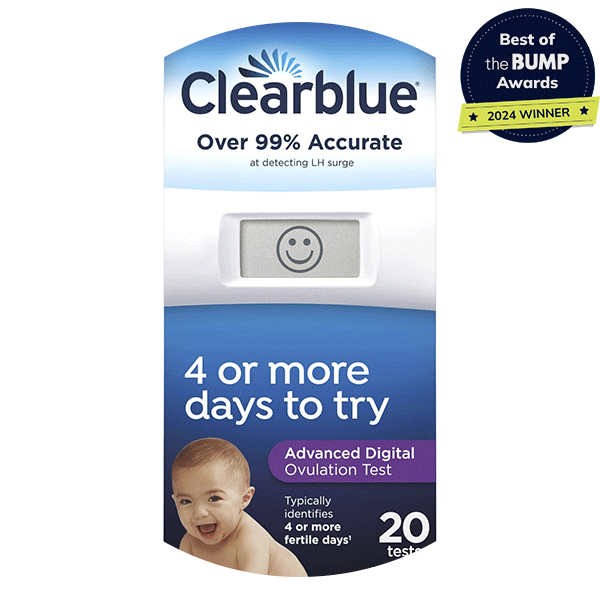 Clearblue Advanced Digital Ovulation Test |  Modern Fertility Ovulation Test Strips |  Inito Fertility Monitor |  Mira Hormone Monitor: Clarity Kit | Tempdrop Fertility Tracker | ||
| Price | $$ | $ | $$$ | $$$$ | $$$ | |
| Detects | Hormones | Hormones | Hormones | 4 hormones | Temperature | |
| Type | Digital | Strips | Monitor | Monitor | Wearable | |
| Fertile days shown | 4 | 2 | 6 | 6 | NA | |
| FSA/HSA eligible | ||||||
| Buy NowRead Full Review | Buy NowRead Full Review | Buy NowRead Full Review | Buy NowRead Full Review | Buy NowRead Full Review |
*Note: Some names have been changed due to privacy requests.
If you’re trying to figure out when to have sex to potentially conceive, an ovulation test kit can help. How? Before we explain, let’s take a virtual trip back to middle school and recap sex-ed class, shall we? Ovulation is the once-a-month release of an egg from your ovary; it travels down the fallopian tube and is available for fertilization. According to the American Pregnancy Association, the average cycle is between 28 and 32 days (though a normal cycle can be anywhere from 24 to 38 days). Ovulation typically occurs between days 11 and day 21 of a woman’s cycle (counting from the first day of her last period).
You only ovulate for one day out of the month, but you actually have a total of six days to potentially get pregnant: the five days leading up to ovulation, and the day of. That’s because sperm can live in your body for up to five days, waiting and ready to fertilize an egg once it releases on ovulation day.
So back to the question: What is an ovulation test? Simply put, it’s an at-home test that looks for biomarkers—typically, specific hormones, but in some cases basal body temperature—to determine when you are about to ovulate, so you can identify your peak fertility window each month and strategically time your baby-making sex.
Ovulation predictor kits come in three different types: strip tests and digital kits, which both analyze your urine for certain hormones, and wearables, like a smart ring or armband, which detect increases in BBT. “For women with regular cycles, both basic test strips and digital trackers are effective,” says Turocy. Regardless of whether you go low-budget or tech-savvy, each option serves the same purpose: to help you “determine the exact day of ovulation,” states Williams.
Ovulation predictor kits generally look for LH in your urine. According to Turocy, “Ovulation tests detect the surge in LH that occurs 24 to 48 hours before ovulation. By identifying the most fertile days in a woman’s menstrual cycle, couples can time intercourse to increase the chances of conception.” LH is produced in the pituitary gland and surges each month just before ovulation, explains Williams. “These tests are usually negative until the LH surge, and positive once ovulation occurs the very next day,” he says. So just because you get a negative result today doesn’t mean it won’t be positive tomorrow; you may need to take tests for a few consecutive days as you think you’re approaching ovulation.
While LH is more commonly tested, some ovulation tests measure additional key fertility hormones, like E3G, PdG and FSH. Each of these hormones rises and falls at different times in your cycle and can provide additional insight into your fertility levels, ovulation and overall reproductive health. Multi-hormone tests may benefit women with irregular cycles or those who are trying to conceive while dealing with certain medical conditions like PCOS.
When choosing an ovulation kit, there are several factors to keep in mind:
-
Method of detection. There are a few methods that help predict the LH surge, including urine-based tests and saliva tests. However, there are some women for whom LH tests aren’t effective—for instance, people with underlying conditions like PCOS. “Women with PCOS may have higher baseline levels of LH, making it challenging to detect the surge that precedes ovulation. This elevated baseline can result in false positives or unclear results,” says Turocy. In those cases, ovulation tests that track BBT may be more effective.
-
Accuracy. Most ovulation kits claim to be at least 98 percent accurate at detecting LH levels when used correctly. Make sure your ovulation predictor kit meets this standard and is easy to use to eliminate inaccurate readings. Remember, ovulation predictor kits won’t work for everyone, so consult your doctor to find the right option for your fertility journey.
-
Ease of use. You’ll want to choose an ovulation test that provides clear instructions and is easy to use. Using one that provides simple and straightforward steps is important, since the accuracy of your results will rely on how well the instructions were followed.
-
Cost. Consider the cost of the ovulation kit, as prices can vary significantly. This holds particularly true when shopping for more sophisticated tests with digital monitors, apps and other enhancements. Determine a budget and select a kit that fits your needs within your price range while still offering accuracy, easy use and reliability.
-
Additional features. Many ovulation kits offer additional features. Things such as tracking apps, fertility monitors or multiple testing sticks can be really helpful additions during your pregnancy journey. You may want to consider some of these options to assist with your overall fertility tracking goals.
While ovulation tests are a helpful tool, Turocy stresses that they’re not foolproof, and other factors such as overall health, lifestyle and a male partner’s fertility should be taken into account. “If a couple is unable to conceive after a year of regular, unprotected intercourse, I recommend reaching out to a fertility specialist. A fertility specialist can conduct a thorough evaluation, offer personalized advice and recommend appropriate interventions to enhance the chances of conception,” explains Turocy.
Figuring out when to take an ovulation test can be tricky—mostly because not all women ovulate on a predictable 28-day calendar. To that end, having a basic idea of your cycle can help narrow it down. Tracking your menstrual cycle can give you a leg up, as can monitoring for changes in cervical mucus or taking your basal temperature.
“Ovulation tests are usually performed daily, within four to five days of ovulation. For women with a 28-day cycle, starting to test on day 10 of the cycle can predict ovulation over the next five to six days. For women with more variable cycle lengths, beginning ovulation testing on day eight of the menstrual cycle might be helpful,” says Williams. He acknowledges that if a woman’s cycle length is very long (35+ days), it becomes increasingly challenging to understand when ovulation is occurring and determine the best day to begin testing.
Once you do start testing, you’ll want to use “early morning urine,” says Robert Kiltz, MD, an ob-gyn, reproductive endocrinologist and the founder of CNY Fertility in Syracuse, New York. This helps to ensure the highest concentration of detectable LH in your urine.
However, some ovulation tests recommend afternoon urine because LH levels peak in the morning and may not show up until later in the day. Carefully read the instructions for your specific ovulation test to ensure you’re collecting your sample at the right time of day. Most app-based tests remind you when to test and which tests (if multiple tests are included) to use each day.
A positive result means you’re experiencing a surge in LH and will be ovulating in the next 12 to 36 hours. To optimize your chances of conception, you‘ll want to have sex asap. “Intercourse should occur on the day of the positive ovulation test,” says Williams. Having sex on the exact day of ovulation actually has a slightly lower rate of success (since you’re not making use of the days sperm could lie in wait as you approach ovulation), but as Williams notes, some ovulation predictor tests only provide 24 hours notice before ovulation, so you do the best you can!
The next step is the hardest: waiting to see if your efforts paid off. “Checking a home pregnancy test 12 to 14 days after ovulation should return a positive result if pregnancy has occurred,” says Williams. And if you get a negative? Well, you can start the whole process over again in about two weeks. Of course, if you have any concerns, are unable to detect a surge throughout your cycle or are experiencing trouble conceiving, consult your doctor for the next steps.
Frequently Asked Questions
How accurate are ovulation tests?
According to Kiltz, ovulation tests are typically 95 to 99 percent accurate at detecting LH in the urine. While that’s encouraging, they’re not the best option for every woman: “The biggest issue is that many people don’t ovulate… The other part is that so many women with PCOS happen to have higher LH levels, so they may get a false positive, thinking they’re ovulating but in fact they’re not,” explains Williams. And while ovulation tests may help you gain a clearer picture of your cycle, Turocy advises people with irregular cycles or underlying health conditions like PCOS to consult a healthcare professional specializing in fertility early on.
Certain fertility-enhancing medications can also alter the results of an ovulation predictor kit. Furthermore, some “women ovulate regularly with a normal LH surge, but the LH concentration in the urine does not get detected,” continues Williams, essentially rendering these ovulation kits useless. With that said, ovulation tests can be a helpful tool when you’re trying to conceive. Speak with your doctor to determine the best ovulation test for you.
Can an ovulation test detect pregnancy?
Ovulation tests are not designed to detect pregnancy. However, pregnancy tests, which detect the presence of the hormone human chorionic gonadotropin (hCG) in a woman’s urine or blood, are reliable for confirming pregnancy and can come in a pack alongside ovulation tests. In some cases, an ovulation test may show a false positive if hCG is present in the urine because the molecular structures of LH and hCG are very similar. In no way should an ovulation test substitute for a pregnancy test.

About the writer:
Lindsay Modglin is a freelance writer and editor covering health and wellness content across top national publications. She specializes in writing about fertility, pregnancy, parenting, shopping and chronic condition management—a result of her background as a nurse and advocate. Her bylines have appeared in publications such as Forbes, Healthline, Verywell Health, Parents, Insider, Everyday Health, Yahoo and many more. When she’s not playing with words, you can find her traveling and spending time with her husband and three kids.
Interested in becoming a product tester for The Bump? Head here to apply.
Please note: The Bump and the materials and information it contains are not intended to, and do not constitute, medical or other health advice or diagnosis and should not be used as such. You should always consult with a qualified physician or health professional about your specific circumstances.
Plus, more from The Bump:
Shaun Williams, MD, is a partner and reproductive endocrinologist at Reproductive Medicine Associates of Connecticut. He received his medical degree at Baylor College of Medicine in Houston, Texas.
Jenna Turocy, MD, earned her medical degree from Georgetown University School of Medicine and went on to complete her residency in Obstetrics and Gynecology. She then completed her fellowship in Reproductive Endocrinology and Infertility at Columbia University. Turocy is board-certified in Obstetrics and Gynecology and an active member of the American Society for Reproductive Medicine.
Robert Kiltz, MD, is an ob-gyn, reproductive endocrinologist and the founder and director of CNY Fertility in Syracuse, New York. He received his medical degree at the University of California, Davis.
American Pregnancy Association, What is Ovulation?
The Bump May 2023 Survey. Editors conducted a survey of 300 new parents from among The Bump community, and asked for feedback and insight on ovulation tests they’d used.
Navigate forward to interact with the calendar and select a date. Press the question mark key to get the keyboard shortcuts for changing dates.
































